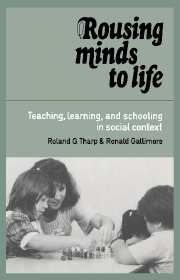Part II - Practice
Published online by Cambridge University Press: 05 June 2012
Summary
In the first half of this book we have discussed theoretical considerations that can guide the organization of a school designed for teaching. In the second half, we turn to a close examination of the principal activity settings required to realize a fully teaching school organization. The principles we have described have found expression in a school organization known as the Kamehameha Elementary Education Program (KEEP). Schools in the KEEP network will serve as our principal (though not exclusive) examples. The KEEP educational system, for a number of years, exemplified most of the principles suggested in this volume. From our opportunity to participate in this unusual experiment we have learned much, both from mistakes and from their correction.
A major lesson learned is this: Teaching transactions in the classroom are organically related to organizational transactions throughout the school administrative and authority lines. The advantage of our KEEP “case study” is that during the years described here, the entire organization consistently operated on principles of maximizing assisted performance for all members of the institution. Therefore, we can now discuss the processes, advantages, and disadvantages of a particular activity setting, and that activity setting can be seen in its relationships to the activity settings that supported it. This dialectic between the teaching/learning interactions and their organizational context must be appreciated, or else the theoretical principles and operational admonitions of this book will be deceptive.
- Type
- Chapter
- Information
- Rousing Minds to LifeTeaching, Learning, and Schooling in Social Context, pp. 113 - 114Publisher: Cambridge University PressPrint publication year: 1989



